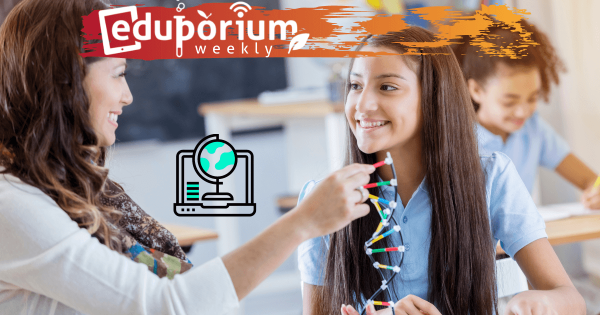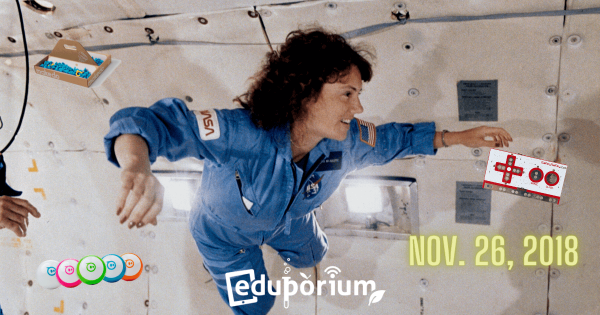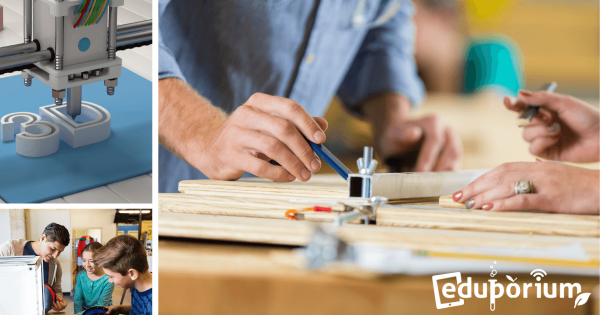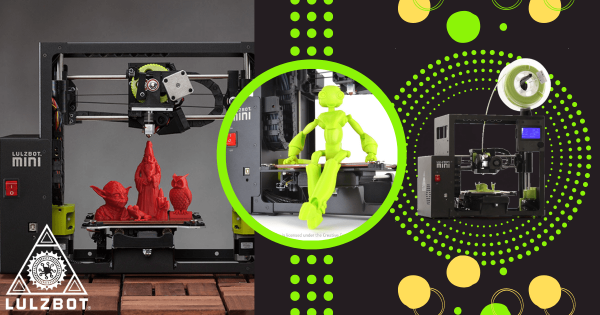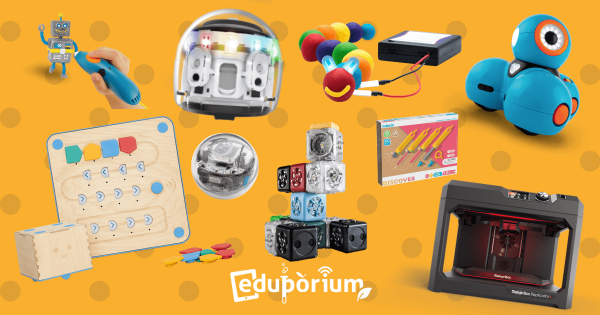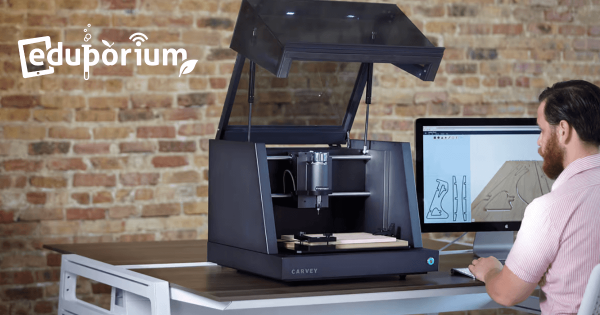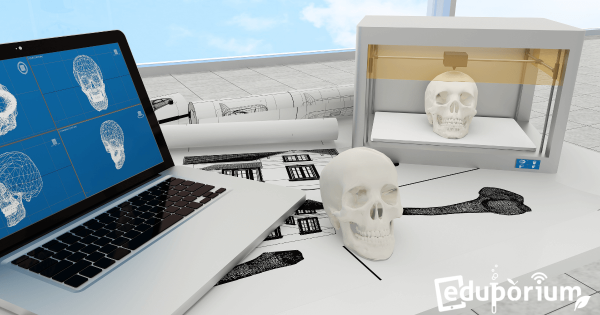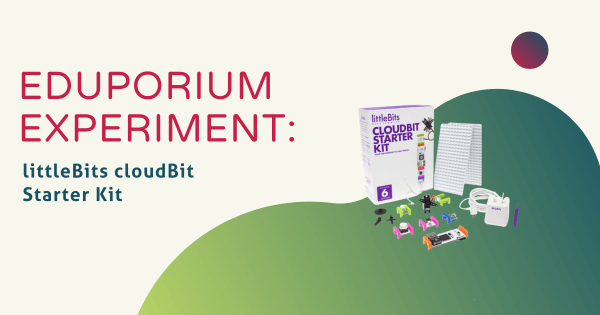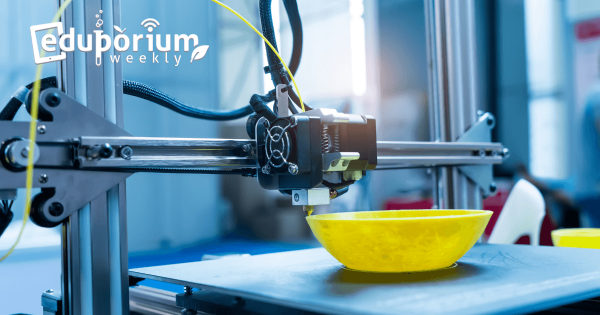As STEM education has developed over the last few years, now there are even more ways for teachers to deliver an innovative educational experience for their students. STEM education has been broken down into various focuses, including robotics, coding, 3D printing, and more, but there have also been letters added.
Maker Education
Maker education is a purposeful, popular, and unique division of STEAM learning. Born from the Maker Movement that various inventors and hobbyists have helped become more mainstream in cities all over the world, that ingenuity they display translates exceptionally well in K–12 classrooms. Especially as makerspaces are popping up in various academic spaces, maker education helps students apply their creativity in useful ways. Maker education also does not require expensive materials or complex technology. While it's beneficial to incorporate these resources in the right circumstances, however, it's far from necessary. Using simple makerspace supplies, like paper, cardboard, and tape, kids can experience the benefits of MakerEd. And, once they become more comfortable with this way of learning, they can progress up to some more intricate projects.
In terms of maker education in schools, there are so many different avenues teachers could take. One of the most popular and impactful, for example, is introducing students to 3D printing. Using these eco-friendly machines, students can generate their own ideas for solving any problem, create a digital rendering of a prototype with a design program, and sit back to let their 3D printer bring their visions to life layer by layer. This also helps them make tons of connections to the STEAM world and innovative problem solving. But, beyond just 3D printing, maker education might involve 3D scanning, 3D laser printing, arts and crafts, electronics-based projects, vacuum forming, and even constructing robots. As long as children are thinking like inventors, maker education can help them develop into true 21st century problem solvers.
-
Join Our Pre-conference Session at the CMTC and Win EdTech!
We’ll be the NYSCATE Annual Conference from Sunday-Tuesday, the NAMTC Leadership Summit in Colorado Springs, CO from Nov. 27-28, the AESA Annual Conference (also in Colorado Springs) from Nov. 28-Dec. 1, and perhaps the most important of the all—the Christa McAuliffe Tech Conference in Manchester, NH coming up just after Thanksgiving. -
Eduporium Weekly | Making A Makerspace Your Way
We say this all the time but a makerspace could be anything you want it to be. Seriously, there is no right or wrong way to design a makerspace. They now often pop up in classrooms, libraries, community centers, basements, closets, or wherever there’s room. The important thing is that students can work with their hands and create something meaningful. -
LulzBot's Stepped Up Its Game With The New Mini 2
With such a powerful line of printers, some may think the LulzBot solutions would be expensive, but they’re really not, especially compared to some of the other 3D printers that educators use at both the K-12 and college level. Coming in at $1,500 before the application of our Educator Discount, their all-new Mini 2 offers a ton of value for -
A Custom EdTech Bundle For All Your Makerspace Needs
Our team of innovators has created a one-stop online store for teachers to research and purchase the STEM and MakerEd technologies that will work best in their classroom. By providing almost any EdTech tool that teachers may need in one place, we have humbly come to think of ourselves as the modern-day ‘Amazon of EdTech.’ -
Looking for Specialized STEM? There's an E–Blox Kit for You
E-Blox, as their name implies, are electronic building blocks—almost exactly like LEGOs—except they’re conductive! Kids can enhance their design and engineering skills and also get more familiar with electronics at the same time. And, with over 10 specialized kits available on our store, there’s always a new area of STEM for them to master. -
Transform Ideas Into 3D Objects With The Carvey CNC Machine
The Carvey is quite a powerful, simple, and accessible CNC machine that will put children in control of their Maker Ed experiences! With its free and easy software program, students in middle and high school can transform any ideas to digital designs then into tangible objects as they build maker, invention, and innovation skills that’ll serve them well for years -
Bringing 3D Printing Into The K-12 Classroom Is Now Easier
We’re here to let you know that you are in luck. We’ve just launched our in-depth, special 3D printer page on our site and thought you’d love to be the first to know! We’ve searched the world for the best 3D printers for schools with the lowest prices and best functionality. Each new model that we offer is purposefully selected -
Eduporium Experiment | littleBits cloudBit Starter Kit
Kids these days pick up on technology fast—like, really fast. Thankfully, there are tools like the littleBits cloudBit Starter Kit that take the concepts they have learned from previous experiences and add a new twist. In this case, the cloudBit enables children to continue making, building and customizing classic littleBits projects, but with a brand new component. -
Eduporium Weekly | 5 Reasons To Love 3D Printing
It’s an exciting time in the 3D printing world—both in the classroom and in the industrial realm. Much of that excitement and innovation being applied in the classroom has been developed by leading tech companies and then tweaked to gel with modern education. Want to learn about a few different 3D printing technologies? Head inside for some great tips and
Page
- Page Previous
- Page 1
- Page 2
- You're currently reading page 3
- Page 4
- Page Next




